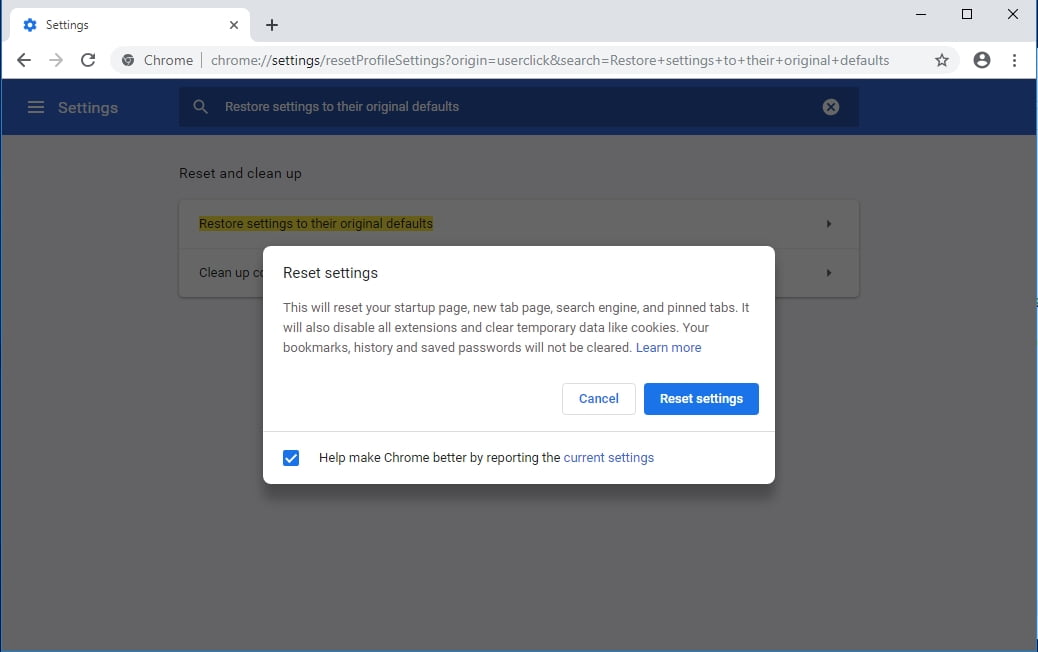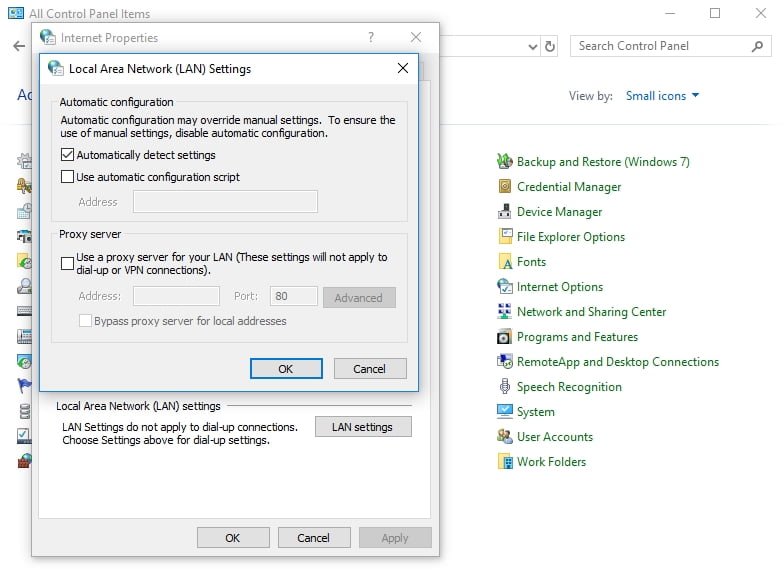- How to Fix Can’t Connect to Proxy Server Issue on Windows 10
- Method 1: Checking if your Connection is Stable
- Method 2: Checking your Antivirus
- Method 3: Checking your Proxy Settings
- Method 4: Fixing your Proxy Settings Via the Registry
- Method 5: Resetting Google Chrome
- Method 6: Reinstalling Chrome
- Method 7: Try Using a Different Web Browser
- Method 8: Removing Suspicious or Problematic Programs

Many of us rely on the Internet to fulfil our daily tasks. Whether you’re a student, an office worker, or a digital nomad, having a stable connection has probably become an indispensable part of your life. However, what will you do when in the middle of scrolling through a website, you see an error message? What are the actions you need to take when the message tells you that there is something wrong with the proxy server or the address is incorrect on Windows 10?
It is worth nothing that such kind of error message can show up even when you are not using a proxy server. Nonetheless, you shouldn’t panic just yet. In this article, we are going to teach you how to fix Err_Proxy_Connection_Failed on Windows 10. If you’re experiencing troubles with a ghost proxy server or your web browser, make sure you run through our list of solutions.
How to Fix Can’t Connect to Proxy Server Issue on Windows 10
Before you learn how to fix Err_Proxy_Connection_Failed on Windows 10, it is ideal for you to know the scenarios related to the issue. This way, you will gain a better understanding of how to prevent the problem from happening again.
- There is something wrong with the proxy server or the address is incorrect on Windows 10 – In some cases, the issue can be caused by problems with the proxy settings. To resolve this, you must disable the feature.
- Unable to connect to the proxy server – If you encounter this problem, we recommend switching to a VPN.
- Err_Proxy_Connection_Failed on Windows 10 – This usually shows up on web browsers. You can try rolling back your browser to its default settings. You can also use a different browser to see if that fixes the issue.
- No connection on your web browser – In some cases, antivirus programs can interfere with web browsers. To resolve this issue, you just have to disable or remove your third-party security tool.
Method 1: Checking if your Connection is Stable
One of the first things you should do is to check if you have a stable Internet connection. Plug into a LAN connection instead of connecting to your Wi-Fi. It is worth noting that this is only a temporary workaround to the problem. It is also not the cause of the issue. However, you can try this solution, and it will make other troubleshooting steps a lot easier. You can also try using other browsers to see if that helps.
We recommend using Firefox because it typically overrides proxy settings. If you opt to use Chrome, you may have to manually tweak the settings.
Method 2: Checking your Antivirus
These days, it is essential to have a reliable third-party antivirus to protect your computer from security threats. However, as we’ve mentioned, it can possibly interfere with your browser and cause the error to appear. You can fix this problem by disabling some features in your antivirus. If doing that does not get rid of the error, we recommend temporarily removing the program.
If uninstalling your antivirus fixes the issue, we suggest switching to a different security tool. There are many great third-party antivirus programs in the market. However, we suggest opting for a trusted product like Auslogics Anti-Malware. This tool can detect malicious items and threats that your main antivirus may miss. What’s more, it is designed to be compatible with Windows systems. So, it will provide you with optimum protection without causing Internet connection issues.

Method 3: Checking your Proxy Settings
One of the simplest solutions you can try is to disable your proxy and switch to the default settings. To do this, follow the instructions below:
- On your keyboard, press Windows Key+S.
- Type “control panel” (no quotes), then hit Enter.
- Click Network and Internet.
- Select Internet Options.
- Go to the Connections tab, then click LAN settings.
- Deselect the box beside ‘Use a proxy server for your LAN’.
- Select the box beside ‘Automatically detect settings’.
![Select Automatically detect settings.]()
- Click OK to save the changes you made.
Method 4: Fixing your Proxy Settings Via the Registry
One of the most common ways to disable Windows features is by tweaking the settings via the system’s interface. However, if you are not able to resolve the problem by unchecking some boxes, then the next solution is to go through the registry. This solution is also ideal for a ghost proxy that keeps on blocking your connection.
Before you proceed, you must remember to follow the steps with caution. Keep in mind that Windows Registry is a sensitive database. If you incorrectly tweak something, you might cause serious damages to your computer. So, you should only proceed if you are confident that you can follow the instructions to a tee.
- Open the Run dialog box by pressing Windows Key+R on your keyboard.
- Type “regedit” (no quotes), then hit Enter.
- Create a backup of the registry. You can do this by clicking File, then selecting Export.
- Follow this path:
HKEY_CURRENT_USER -> Software -> Microsoft -> Windows -> Current Version -> Internet settings
- Remove these values:
Proxy Override
Migrate Proxy
Proxy Enable
Proxy Server
- Restart your computer, then check if the connection problem is gone.
Method 5: Resetting Google Chrome
Some users claimed that they had encountered the proxy issue because of their Chrome settings. As such, we recommend rolling back your browser to its default settings. Before you proceed, you should know that this solution will delete your extensions and cache. So, it is advisable to create a backup of your important data. Once you’re ready, follow these steps:
- Click the Menu icon, which looks like three vertically aligned dots, in the top-right corner of Google Chrome.
- Select Settings from the options.
- Scroll down, then click Advanced.
- Under the Reset and Clean Up section, click ‘Restore settings to their original defaults’.
- Click Reset Settings.

Once you’ve reset your browser to the default settings, you should be able to resolve the problem.
Method 6: Reinstalling Chrome
It is possible that the issue has something to do with your Chrome installation. So, to fix it, you would need to reinstall your browser. The process is straightforward. However, if you prefer completely removing Chrome, we recommend using software specifically designed for uninstalling programs.
You might also want to try the Canary or Beta version of Chrome. The Canary version offers the latest fixes. However, they might not be fully tested for smooth operation. So, you can possibly encounter other problems with this version. Google also releases fixes for bugs through the Beta version, which is also a good option.
Method 7: Try Using a Different Web Browser
Some users reported that they kept seeing the following error messages on Chrome:
There is something wrong with the proxy server.
There is no Internet connection.
If you encounter the same problem, we suggest using other browsers like Edge or Firefox. Check if the issue is present on the other web browsers as well. We understand that it can be inconvenient to switch to a new browser. However, it is worth considering this as a temporary workaround while you are trying to fix the issue on your Chrome browser.
Method 8: Removing Suspicious or Problematic Programs
It is possible that third-party programs are interfering with your system. So, we advise you to locate the suspicious applications causing the problem on your computer. In most cases, the culprit is an application that has the capability to modify a PC’s Internet settings. Some users reported that Browser Security had caused the issue on their PC. So, if you have something similar installed, we recommend removing it.
Do you need to clarify any step in the solutions we provided?
Do not hesitate to ask questions through the comments section below!






 Done! Great to see you among our subscribers!
Done! Great to see you among our subscribers!